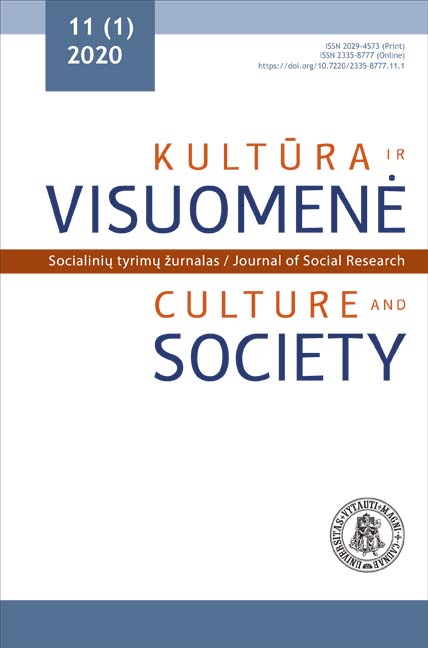Vaiko priežiūros išmokų gavėjų struktūros pokyčiai Lietuvoje: lyčių egalitarizmo šeimoje ženklas?
Changes in Structure of Childcare Beneficiaries in Lithuania: a Sign of Gender Egalitarianism in a Family?
Author(s): Alina NorgėlaitėSubject(s): Family and social welfare
Published by: Vytauto Didžiojo Universitetas
Keywords: Fatherhood; Motherhood; Family policy; Childcare leave;
Summary/Abstract: Childcare is related more with women than men in many countries. The increased number of working mothers caused changes in perception of motherhood and fatherhood. Family policies created and implemented in different countries played an important role for these changes. The legal regulation, which came into force in 2011, was one of more distinct recent changes in Lithuanian family policy. It allowed parents to choose from two childcare leave options: either shorter but better paid leave until the child reaches the age of 1 year, or longer but less paid leave with a possibility to work without losing childcare benefits during the second year of the leave. This created more opportunities for parents to combine childcare with paid employment and caused the significant increase in number of beneficiaries among men during the second year of the childcare leave. However, an assumption is made that the structural changes in beneficiaries have no connection to changing cultural attitudes within the society and are rather caused by new opportunities for families to choose the best financial option during the childcare. The object of this article is gender egalitarianism in the aspect of childcare. The aim of this article is to reveal how the structure of childcare beneficiaries, under changing childcare leave legislations, has changed in the last 10 years, based on the secondary analysis of 2009-2019 childcare beneficiaries data from the State Social Insurance Fund, as well as, the analysis of childcare leave legislations. The research revealed that, despite of legislations, priority is given to longer childcare leave and structural changes in beneficiaries are found only when a possibility to work without losing allowance arises: number of men receiving childcare benefits increases in the second year of child’s life.
Journal: Kultūra ir visuomenė: socialinių tyrimų žurnalas
- Issue Year: 11/2020
- Issue No: 1
- Page Range: 55-78
- Page Count: 24
- Language: Lithuanian

